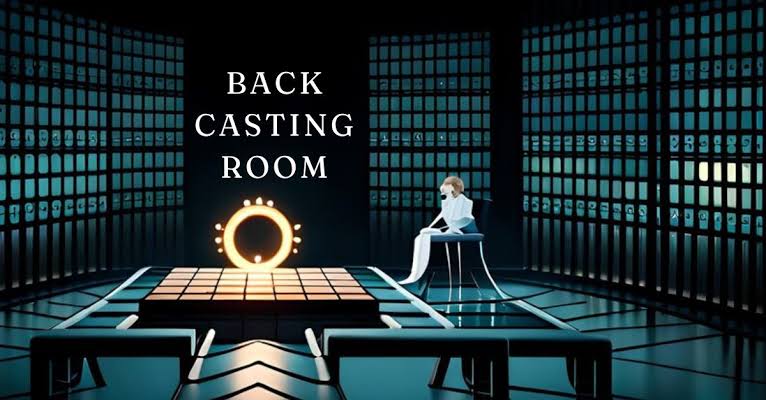When we think of a casting room, most people immediately imagine the audition space for movies, plays, or even reality shows. However, the “back casting room” is a different concept entirely. This blog post will dive into what exactly a back casting room is, why it’s essential in various industries, and how it plays a significant role in production processes.
In this post, we’ll explain the concept in simple, everyday terms, so even if you’re hearing about a back casting room for the first time, you’ll leave with a clear understanding of its importance. Let’s break it down!
What Is a Back Casting Room?
A back casting room is an area or a designated space in industrial settings—specifically in manufacturing and foundries—where the casting process takes place after the initial mold preparation. It’s a critical space used to refine or “back” a casting, ensuring that it’s strong, stable, and ready for the next stage of production.
This room handles activities such as:
- Removing unwanted materials or imperfections from the mold.
- Conducting quality checks to ensure the casting meets specific standards.
- Making final touches, like polishing or surface adjustments.
In simple terms, the back casting room is where a raw, freshly molded object gets its finishing treatment.
Why Is a Back Casting Room So Important?
To understand the value of a back casting room, it’s essential to know a little bit about the casting process itself. When materials like metal or plastic are poured into molds, they need time to cool and set. However, cooling alone doesn’t ensure a perfect product. This is where the back casting room comes in.
- Quality Control: The casting process can create minor defects such as air bubbles or slight misalignments. In the back casting room, these are fixed. Think of it like baking cookies—you wouldn’t serve them straight out of the oven without making sure they’re perfectly cooked, right?
- Product Durability: After casting, products are often fragile or incomplete. By giving them extra attention in the back casting room, manufacturers can increase the durability and quality of the final product.
- Efficiency in Production: By having a dedicated space for finishing the castings, companies can streamline their operations. The back casting room ensures that there’s a smooth flow from raw casting to finished product, reducing delays in the manufacturing process.
Industries That Rely on Back Casting Rooms
A back casting room is particularly critical in industries like automotive manufacturing, aerospace, and even art sculpture production. These industries rely on precision and high-quality finishes, which can only be achieved with the extra care provided in the back casting room.
For example:
- Automotive Industry: Car engine parts are often cast and need extra refinement. In the back casting room, workers will remove any surface defects or imperfections before these parts are assembled into engines.
- Aerospace Industry: Airplane parts must meet strict standards for safety. After casting, these parts are carefully inspected and refined in the back casting room to ensure they meet industry regulations.
- Art and Sculpture: Artists creating bronze or other metal sculptures often use back casting rooms to perfect the details of their work after the initial casting process.
How Does a Back Casting Room Improve the Manufacturing Process?
Here are some specific benefits of having a back casting room:
- Reduced Waste: Imperfections and errors that occur during casting don’t necessarily mean the entire product needs to be discarded. The back casting room allows for these small mistakes to be corrected, reducing overall waste in production.
- Cost Efficiency: By fixing imperfections post-casting, companies can save on costs associated with producing entirely new molds or products.
- Enhanced Product Longevity: Products that undergo post-casting treatment are often longer-lasting and more resistant to wear and tear, making them a better investment for consumers.
The Role of Technology in Back Casting Rooms
Modern technology has revolutionized the way back casting rooms operate. Advanced tools like 3D scanning, automated polishing systems, and computer-aided design (CAD) software have made the process faster, more efficient, and more accurate than ever before. These technologies can identify minute imperfections and fix them with precision, helping industries produce top-quality products consistently.
Conclusion: The Backbone of Quality Manufacturing
The back casting room may not be as widely discussed as other parts of the manufacturing process, but its role is crucial. It is the final checkpoint for ensuring products are free from defects, structurally sound, and ready for use. From the automotive industry to aerospace and even artistic endeavors, this unsung hero in production plays an invaluable role in maintaining quality and efficiency.
If you work in or are interested in manufacturing, take note of the back casting room’s importance. It’s where the raw, unrefined pieces are transformed into polished, high-quality products.
Frequently Asked Questions (FAQs)
1. What does “back casting” mean in manufacturing?
Back casting refers to the process of refining and improving a product after the initial casting has been done. This usually happens in a specialized room where minor defects are corrected, and the final product is perfected.
2. Is a back casting room essential for all industries?
While not every industry needs a back casting room, it’s crucial in sectors where high precision and quality are required, such as automotive, aerospace, and metalworking.
3. What happens in a back casting room?
In a back casting room, casted items are inspected, refined, and finished. This can include polishing, removing excess materials, fixing defects, and ensuring the item meets quality standards.
4. Can back casting reduce production costs?
Yes, back casting can reduce costs by salvaging products that might otherwise be discarded due to minor defects. This reduces waste and improves efficiency.
5. Are back casting rooms automated?
Many modern back casting rooms incorporate automation technologies like robotic arms, 3D scanners, and precision tools to streamline the refining process.
6. How does a back casting room differ from a regular casting room?
A casting room is where the initial mold is filled and the product is formed. A back casting room is for refining the product after it has been cast, focusing on improving quality and correcting errors.

